Craving Salt? What Your Body Might Be Trying to Tell You
Introduction: When “Just a Little Salt” Becomes a Craving
Ever find yourself licking the salt off crisps before eating them — or adding an extra pinch of salt to everything, even when it’s already seasoned? Craving salty foods isn’t unusual, but when it becomes persistent or intense, your body may be trying to tell you something important.
Salt cravings can arise for many reasons — from dehydration and mineral imbalance to stress, hormonal shifts, or even a simple dietary habit. In some cases, salt cravings can also signal electrolyte depletion or low levels of certain nutrients like sodium, potassium, or chloride, which are essential for hydration and nerve function.
Let’s explore what science says about salt cravings, what they might mean, and how to restore balance safely and naturally.
The Science of Salt and the Human Body
Salt — or more specifically, sodium chloride — is one of the most essential compounds in human biology. Sodium is vital for:
- Maintaining fluid balance inside and outside your cells
- Supporting nerve transmission and muscle contraction
- Regulating blood pressure
- Helping the intestines absorb nutrients efficiently
When sodium levels drop too low (a condition called hyponatremia), the body responds by increasing salt appetite — a built-in survival mechanism to restore balance.
In other words, salt cravings can be your body’s way of correcting an imbalance.
1️⃣ Dehydration and Electrolyte Loss
The most common reason for craving salt is simple: dehydration.
When you sweat — whether from exercise, heat, or stress — you lose not just water but electrolytes like sodium and potassium. If you replace the water but not the minerals, your body stays slightly unbalanced, and the craving for salt kicks in to restore equilibrium.
Healthline explains:
“Craving salt may be a sign of dehydration or an electrolyte imbalance, which occurs when levels of sodium and other minerals become too low.”
(Healthline – Craving Salt)
Signs this could be you:
- You’ve been sweating heavily (exercise, hot weather, sauna)
- You drink lots of water but still feel tired or dizzy
- You experience muscle cramps or headaches
- You crave salty snacks after workouts
Fix: Rehydrate with both water and electrolytes. Natural options include coconut water, vegetable broth, or a pinch of sea salt in your water if you’ve been sweating excessively.
2️⃣ Low Sodium or Electrolyte Imbalance
Sodium is the body’s main extracellular electrolyte — meaning it regulates fluid movement between cells. Too little sodium (often due to excessive water intake or restrictive diets) can make you crave salt instinctively.
Medical News Today adds:
“Craving salt can sometimes indicate a sodium deficiency or an imbalance in electrolytes that the body attempts to correct.”
(Medical News Today – Salt Cravings)
This is especially relevant if you follow very low-sodium or plant-based diets, which may lack natural sodium sources.
Fix:
- Don’t fear salt entirely — especially if you’re physically active or sweat frequently.
- Choose mineral-rich salts like sea salt or Himalayan pink salt for trace minerals.
- Combine sodium with potassium-rich foods (bananas, beans, leafy greens) for optimal balance.
3️⃣ Stress, Cortisol, and the Adrenal Connection
Persistent salt cravings can sometimes appear during periods of chronic stress or fatigue. That’s because stress hormones like cortisol influence fluid and electrolyte balance.
When your adrenal glands are under prolonged stress (sometimes described as “adrenal fatigue” in functional medicine), your body may lose sodium faster and retain less fluid — triggering salt cravings as compensation.
While “adrenal fatigue” isn’t a formally recognized medical diagnosis, it reflects a real physiological pattern: stress can deplete electrolytes.
The Cleveland Clinic notes that people with adrenal insufficiency (Addison’s disease, a medical condition) experience strong salt cravings due to low aldosterone, the hormone that helps the body retain sodium. This shows how closely stress, hormones, and salt regulation are intertwined.
4️⃣ Hormonal Changes (Especially in Women)
Hormonal fluctuations can affect appetite and salt preferences. Many women report stronger cravings for salty foods before their period or during pregnancy.
During the luteal phase (the second half of the menstrual cycle), estrogen drops while progesterone rises — changes that can slightly lower sodium levels and increase appetite. Pregnancy also raises blood volume and alters mineral needs, which can amplify salt cravings.
In most cases, these cravings are temporary and reflect your body’s adaptive response to changing fluid needs.
5️⃣ Habit and Taste Adaptation
Sometimes, salt cravings are simply the result of habit. Modern diets are high in processed foods loaded with sodium. Over time, your taste buds adapt, and you need more salt to experience the same flavor satisfaction.
The good news? Taste buds can reset within just a few weeks of reducing sodium intake. Once you adjust, even lightly salted food will taste flavorful again.
When Salt Cravings Could Signal Something More
Occasional salt cravings are normal. But if your desire for salt becomes excessive or you’re consuming high-sodium foods daily, it’s worth paying attention.
Persistent or extreme salt cravings can sometimes indicate underlying issues such as:
- Adrenal insufficiency (Addison’s disease)
- Severe dehydration
- Cystic fibrosis (excessive salt loss through sweat)
- Chronic low blood pressure
If you’re craving salt constantly, despite drinking enough water and eating a balanced diet, it’s best to consult your healthcare provider for a blood test and assessment of sodium, potassium, and cortisol levels.
How to Manage Salt Cravings Naturally
1. Stay Properly Hydrated
Hydration isn’t just about drinking water — it’s about maintaining fluid balance. Pair your fluids with electrolytes, especially during intense exercise or hot weather.
2. Eat Mineral-Rich Whole Foods
Instead of processed salty snacks, get your minerals from nutrient-dense sources:
- Celery, spinach, and seaweed for natural sodium
- Potassium from bananas and beans
- Magnesium from nuts and seeds
3. Moderate Processed Foods
Most processed foods contain excessive sodium without the mineral balance found in natural sources. Gradually reducing processed food helps reset taste sensitivity and lowers your overall salt threshold.
4. Support Stress and Sleep
High stress can deplete sodium and trigger cravings. Prioritize relaxation, adequate sleep, and stress management to naturally reduce salt-seeking behavior.
5. Listen to Your Body — but Don’t Ignore Persistent Cravings
Occasional salt cravings can be normal, but constant or extreme salt hunger may require checking your hydration and electrolyte balance.
The Bigger Picture: Nutrient Balance and Cravings
Salt cravings, like other cravings, reveal how closely nutrition and biology are linked. Whether it’s iron deficiency driving ice cravings, magnesium driving chocolate cravings, or chromium influencing sugar cravings, these patterns show that cravings often signal imbalance, not weakness.
That’s the philosophy behind the AI Diet & Gym app:
By identifying common nutritional gaps and helping you close them through balanced meal plans, our system supports your body’s natural appetite control — so cravings become less frequent, and healthy eating feels effortless.
Conclusion: Salt Cravings Are Signals, Not Failures
Next time you crave something salty, pause before blaming yourself. In many cases, it’s not about willpower — it’s your body’s built-in feedback system trying to restore balance.
Whether due to hydration, stress, hormones, or diet, understanding the cause of salt cravings can help you make smarter nutrition choices.
So go ahead — add a pinch of salt when your body truly needs it. Just make sure it’s the right kind of balance, not a reflex from processed food habits.
References
- Healthline – Craving Salt: What It Means and How to Stop It
- Medical News Today – Craving Salt Causes
- Cleveland Clinic – Adrenal Insufficiency and Salt Cravings
- Verywell Health – Craving Salt and Electrolyte Imbalance
- Oregon State University – Micronutrient Information: Sodium and Electrolyte Balance













